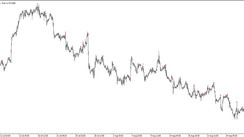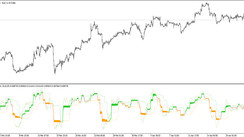The New Zealand dollar remains one of the most resilient of the major world currencies against the US dollar. In yesterday's review, we noted that "one of the key priorities in determining the dynamics of the exchange rate is the monetary policy of the country's central bank".
And in this regard, the RB of New Zealand is one of the first whose management announced the possibility of curtailing incentive programs. At the beginning of last month, representatives of the RBNZ management proposed tightening mortgage lending standards from October 1. The bank's management will hold "consultations on restrictions regarding the ratio of the size of debt obligations and income, the minimum level of interest rates", since “the previous restrictions did not lead to a significant reduction in risky lending”. The goal of these measures is to reduce the share of the most risky new home loans to 10% from the current level of 20%. This news contributed to a rather sharp strengthening of the New Zealand dollar, until the moment when in mid-August, the country's health authorities announced the detection of the first case of coronavirus infection since February and hinted at the need to introduce a lockdown. Their statement notes that "tough early response" is the "best tool" for stopping the spread of the coronavirus.
The New Zealand currency fell sharply in response to the news, and at its August 18 meeting, the Reserve Bank of New Zealand left its key interest rate unchanged, at a record low of 0.25%. Prior to the delta strain of coronavirus in New Zealand, it was widely expected that the RBNZ at this meeting would raise the official rate by 25 basis points and announce the continuation of the phased rate hike process. The central bank's forecasts did imply an increase in the rate to 0.6% by December of this year and to 1.6% by December next year.
However, the NZD and the NZD / USD pair subsequently recovered fully from the August 19 fall. Now the rate of increase in the incidence has slowed down again, which, in turn, has supported expectations of an increase in interest rates this year. Rising government spending and lower interest rates in response to the pandemic have overheated the New Zealand economy, pushing inflation above the RBNZ target.
Two overlapping factors (expectations of a rise in interest rates in New Zealand and promises from the Fed's leadership not to raise rates earlier than the target date, i.e. the end of 2023) create prerequisites for further growth in NZD / USD.
Nevertheless, the situation in the financial markets, as you know, can change dramatically. The next Fed meeting is scheduled for September 21-22, and the RBNZ - for October 6. Most economists believe that the Fed is unlikely to change the parameters of its policy at this meeting.
"The Covid pandemic is still affecting economic activity. We still feel it to a great extent. You see, we cannot yet declare victory", said Fed Chairman Jerome Powell ahead of the Jackson Hole Economic Forum late last month. However, the Fed's leadership may announce the possibility of starting the curtailment of the QE program after the November (November 2-3) meeting.
If such statements from the Fed do follow, then we should expect a sharp strengthening of the USD, including in the NZD / USD pair. If there are no changes in the policy and rhetoric of the Fed's statements at the September meeting, market participants trading NZD and the NZD / USD pair will turn their attention to the October meeting of the RBNZ.
Meanwhile, NZD and NZD / USD remain in the bull market. At the time of publication of this article, the NZD / USD pair is traded near the 0.7105 mark, in the zone above the key support levels 0.6865, 0.7020 (see "Technical analysis and trading recommendations").
Late last month, the New Zealand dollar received additional support from strong statistics from New Zealand. Thus, the volume of retail sales in the 2nd quarter of 2021 increased by +3.3% (after an increase of +2.8% in the 1st quarter and against the forecast of a slowdown in growth to +2.0%). At the same time, retail sales, excluding road transport, jumped +33.3% in the second quarter after growing by +6.6% in the previous first quarter.
Now, market participants trading in the NZD will pay attention to the release today (at 22:45 GMT) of New Zealand GDP data for the 2nd quarter. Considering the recent rise in prices for commodities and agricultural products (especially for dairy products, which is the most important component of New Zealand's exports), as well as the fact that
New Zealand is the least affected by the coronavirus pandemic compared to other large economies, it is likely that New Zealand's Q2 GDP report will come out with positive numbers. GDP is expected to grow by +1.3% in the 2nd quarter of 2021 (previous values +1.6%, -1.0%, +13.9%, -11%, -1.2%, +0.1%) and +16.3% in annual terms (previous values +2.4%, -0.9%, +0.2%, -11.3%, 0%, +1.7%). The data indicate that the gradual recovery of the New Zealand economy continues after falling in the first half of 2020. If this GDP report by the Bureau of Statistics New Zealand, which is considered the main indicator of the activity and health of the national economy, turns out to be even better than the forecast, then expectations of an imminent increase in the RBNZ interest rate will increase. This is a strong bullish factor for the NZD. In this case, we should expect further strengthening of the New Zealand dollar and growth of NZD / USD. The data worse than the forecast will negatively affect the NZD quotes.





